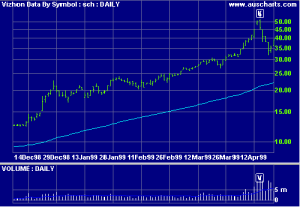Reversal Days
Reversal signals may be formed by a single bar relative to the preceding bar. The signals vary greatly in strength: weak signals may only signal a peak or trough in the short cycle while extreme signals may indicate a change in the primary trend
Signal Strength
There are 4 major factors that affect signal strength:
- Reversal signals are most reliable if they occur after a strong trend:
a strong trend = a strong reversal signal.
If the trend is weak, so is the signal.
- Days that spike.
- Wide-ranging days – days with a very wide range.
- Unusually high volumes.
- Signal patterns:
- Open-Close reversals are powerful signals;
- Closing Price reversals are very strong;
- Hook reversals are weaker, formed on an inside day;
- Key reversals do not occur often but are potent signals;
- Pivot Point reversals and Complex Pivot Points are the most common signals;
- Island reversals and Island Clusters are powerful signals, formed with gaps.
Other reversal and continuation patterns are identified under gaps and candlesticks.
Example
Charles Schwab with 150-day moving average and 20-day volume exponential moving average.
The Key Reversal at [K] comes after a strong up-trend and exceptionally high volume activity [V]. Price gaps up, opening above the High of the previous day, then falls sharply to make a key reversal on a wide-ranging day.
The reversal signals a change in the primary trend. Compare this to earlier, weaker reversal signals that merely signaled a change in the short cycle.
Views – 181

Recent Comments